One of the major reasons hunters choose a 20 gauge over a 12 gauge is the former’s smaller frame, weight, and recoil. Though they may already own a 12, many field sportsmen wind up reaching for their 20s because the smaller gun is just easier to handle, and there are just a few hunting situations—layback goose hunting and spring turkey hunting, to name two—in which the bigger payload might make a difference.
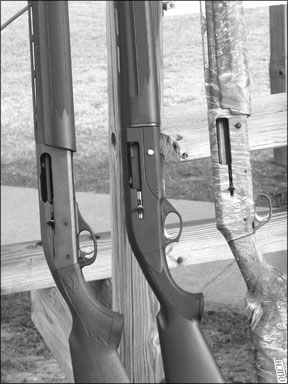
We recently tested a trio of autoloaders in 20 gauge that offer quite a savings in physical form over their bigger stablemates. Our 3-inch-chamber 20 gauges were the Browning Silver Mossy Oak Duck Blind No. 011366604, $1,064; Mossberg SA-20 No. 75771, $496; and the Remington 11-87 Sportsman No. 29825, $757. The Remington and Mossberg guns have black synthetic finishes, but the Silver 20 is only available in wood-and-blued and camo treatments. Since the stock underneath the Mossy Oak is composite, we opted for it rather than the wood finish.
In two cases, our test guns are the sub-gauge siblings of well-known 12s. The Remington Sportsman line has two 12s and three 20s. The 12s come in 26- and 28-inch barrels and weigh 8.1 pounds and 8.25 pounds respectively, compared to the weight of our test 28-inch-barrel gun, about a full pound lighter. The 28-inch 12-gauge Browning Silver, which is chambered for 3.5-inch shells rather than 3-inch shells like the 20, weighs in at 7.6. Our test Silver 20 was likewise a full pound lighter. The Mossberg is a new-for-2008 line for that company, so the SA-20 designation names just a single chambering, as you might expect. However, comparable guns in the 930 autoloader line, which are chambered only for 12 gauge, weigh 7.75 pounds to the SA-20’s feathery 6.0 pounds.
How We Tested
We charged our team to shoot two different types of targets for these guns, since we were evaluating them for all-round use. We first shot patterning targets on all three guns fitted with Modified tubes, since that was the only tube that came with the Remington. Our test ammo for that was Federal Hi-Power 2.75-inch loads containing 2.75-dram equivalent powder charges propelling 1 ounce of 7.5 shot, with a rated muzzle velocity of 1170 fps. This load has approximately 350 pellets in the cup.
On Trap Field 1 at American Shooting Centers in Houston, we mounted Hunter John Shotgun Pattern Targets on steel frames and had a single shooter fire three times into each target from a slow, low-gun mount. The marked distance was 40 yards. With all three guns fitted with Modified chokes, we were looking for densities of 55 to 60 percent.
Also, shooting three shots into each target is a shorthand way to assess pattern density and location, rather than shooting three different targets. With three shots in the paper, it’s easy to visually identify where the shot charge is hitting.
The Browning put a total of 591 pellets into the 30-inch circle, or 56%. The Mossberg delivered 596 pellets (56%), and the Remington delivered 625 pellets, 59%.
All told, this was less important for the Browning and Mossberg guns since they came with extra chokes, and if the pattern density isn’t sufficient for the task, then screwing in a tighter choke solves the problem. And additional Rem-Chokes aren’t that expensive (about $20), if you need something tighter or looser.
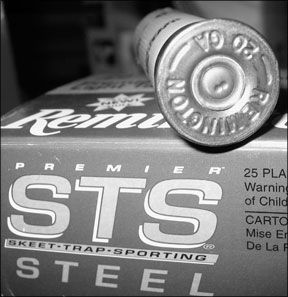
Where those patterns hit on the target are much more important, we think. The Mossberg showed a strong bias, with the center of the pattern being two clay-target widths low and to the left. The same was true of the Remington, but the Browning showed a similar amount of shift high and to the left. Since all three guns shot to the left, we’ll have to attribute much of the horizontal shift to the 30-mph right-to-left wind we encountered during the patterning.
We also shot two field tests with the guns. The first test came with the team shooting a half a day of sporting clays and going through nearly two cases of ammo. The second half saw the team visit a trap range and shoot that game with the gun unmounted, like a field gun would be used. For these two tests, we used the aforementioned Federal and two Remington loads, a 2.75-inch 7/8-ounce Game Load No. GL206 running No. 6s at 1225 fps, and a load we really grew to love, the Premier STS Steel Light Target Load No. STS20LS7, a 2.5-dram-equivalent powder charge under 7/8 ounce of No. 7 shot, with a rated muzzle velocity of 1200 fps. Combined with the light 20s, this load didn’t create a lot of push on the shooter, but it broke trap clays fast and solidly.
Here’s what we thought of the trio:
Browning Silver Mossy Oak Duck Blind No. 011366604 3-inch 20 Gauge, $1,064
Starting from the outside in, the Silver’s Mossy Oak Duck Blind camouflage was introduced in 2007 on Gold, Silver and BPS hunting shotguns. The camo is covered by Dura-Touch Armor Coating, a stock treatment designed to improve the grip and feel of the gun while protecting the stock. Our testers said the stock felt “velvety smooth,” as Browning claims, and even when we wet our hands and shot, we felt we had control of the gun.
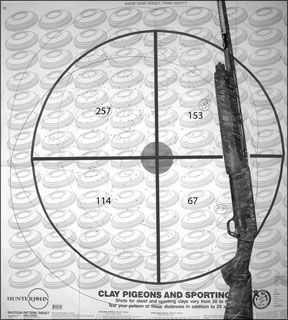
Aluminum alloy makes up the semi-humpback receiver, and it’s tied to a lightweight-profile back-bored barrel fitted with a ventilated rib and white front bead. The action is gas-operated and handles shells up to 3 inches in length. We didn’t extensively test with 3-inch shells, but we did function-run the gun (with the plug out) with a mixture of 3-inch and 2.75-inch lead and steel shells interchangeably, and didn’t see any malfunctions in this test. However, we did get some weak hammer strikes/misfires when we loaded a single shell into the open receiver, and we had one failure to feed a second round of the Remington target load.
All current Browning shotguns with the Invector or Invector-Plus choke tube system are fully steel shot compatible with current factory loads. Our gun came with IC, Modified, and Full chokes. Browning’s website says, “…[W]e do not recommend the use of Invector full or extra full chokes with steel shot. They pattern too tightly, and sometimes result in a blown pattern.” Browning adds, “The longer choke taper inside an Invector-Plus choke tube produces consistent patterns with more uniform densities and fewer fliers.” The Browning blued-steel tube measured 2.137 inches in length, compared to 2.038 inches for the Remington tube and 2.010 for the Mossberg. We doubt that the miniscule difference in choke length makes much difference in pattern quality, and our test team didn’t see a substantial difference on paper.
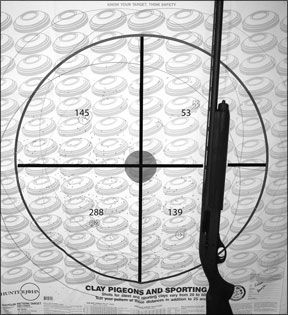
Browning’s self-adjusting Active Valve gas system uses gas from fired shells to operate the action instead of recoil. When shooting light loads, most of the gases are diverted to operate the action. With magnum loads, only the minimum amount of gas necessary is used to operate the action, while the majority of the gases are vented through the Active Valve and out the top of the forearm and away from the action. Browning claims this reduces recoil, and perhaps compared to a fixed-breech gun that might be true, but our testers didn’t complain one way or another about recoil. All three were delights to shoot.
The Silver’s trigger was actually gold-colored, and it broke at 7.1 pounds, 2 pounds heavier than the Mossberg and half a pound heavier than the 11-87. The edges were comfortably rounded and felt good with either skin or gloves. The trigger-guard openings on the Silver and Remington (1.7 long by 0.9 inch tall) were slightly smaller than the Mossberg (1.7 by 1 inches).
The gun as tested weighed 6.5 pounds, heavier than the Mossberg (6.0 pounds) and lighter than the Remington (7.25 pounds, probably a result of the Remington’s steel receiver). The Silver balanced horizontally underneath the action-release button, and we generally felt it mounted and swung fine. However, some members of our team, especially the lefty, said the gun tended to mount short—that is, with the shooter seeing too much of the top of the rib. They compensated by exaggerating the mount to the face, but it was a conscious adjustment we had to make. Why? We’re not sure. It could have been a slight difference in drop at comb (1.75 inch for the Browning, 1.5 inch for the others), or a function of the Silver’s soft and squishy buttpad (which we liked a lot) creating just a little drag on the shooting vest. We believe this accounts for the Browning’s putting 70% of its pattern above the midline.
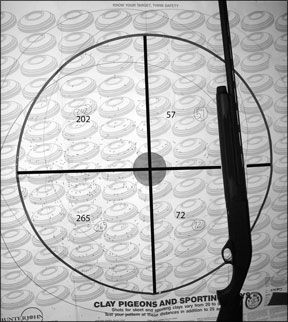
<>Our shooters also noted that the sight plane for the Browning was much busier, with a deeper longitudinally grooved cut in the receiver top leading to a cross-grooved rib top, with a bumpy transition from receiver to rib. Also, the rib wasn’t as wide as the ribs on the other two, and the receiver was not drilled and tapped for scope use, but neither were the other guns.
Elsewhere, we appreciated features of the Silver that did show attention to detail. We approved of the magazine cap swivel stud and buttstock swivel stud, similar to those on the Remington but lacking on the Mossberg. We liked that the Browning was easier to load from the bottom of the gun than the other two. The shooter didn’t have to depress a button on the elevator (like on the Remington) or the action-release button (like on the Mossberg) to slide in a shell. Checkering on the Silver was more extensive than on the others, and the wrist on the stock was thicker, if that’s something you prefer. The Silver’s triangular cross-bolt safety at the back of the trigger guard (like the circular bolts on the others) worked properly. We were impressed with the force with which it threw empty hulls out and forward.
Mossberg SA-20 No. 75771 3-Inch 20 Gauge, $496
The company’s initial-release copy for this gun is actually pretty accurate: “Introducing the new SA-20 Semi-Automatic 20 Gauge Shotgun by Mossberg International-perfectly balanced, fast handling, lightweight and just as important, easy on your wallet.”
This gas-operated shotgun is available with a standard 14-inch length of pull synthetic stock and forearm, while the SA-20 Bantam features a shortened 13-inch LOP for younger or smaller shooters. Barrel lengths include 26 and 28 inches for the SA-20 and 24 inches for the Bantam. All have ventilated ribs. Our gun measured 48.5 inches in length and weighed 6.0 pounds. It handles 20-gauge 2.75-inch and 3-inch factory loaded shotshells and has a five-round capacity of the shorter shotshells. It comes with the company’s Sport Set of five chokes and a wrench in a small plastic case, a free gun lock, and a one-year limited warranty. All the metal surfaces are matte blue on top of synthetic black stocks. The gun was supposed to come with three drop spacers and one spacer for cast, but those items weren’t included in our sample. C’est la guerre.
The gun is made by Armsan (www.armsan.com) in Turkey, a collaboration of Khanshotguns Co. and ATA Arms. It strongly resembles the A620S by Armsan and the Cy Synthethic by ATA Arms.
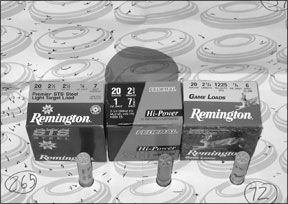
Like on the Browning, the gas system vents excess gases to aid in recoil reduction and helps eliminate stress on the operating components. Notable to us was that while shooting this 6-pound gun, we didn’t notice any more recoil with it than the other, heavier guns. Also, it pointed very fast, our team said, and even though we weren’t able to adjust it with the non-included LOP and cast spacers, it fit most of our shooters well out of the box. The trigger-pull weight was a lowest-of-the-test 5.0 pounds, and the rounded trigger itself was comfortable on the finger. The top of the receiver offered a better sight plane than did the Browning, our team said, and was on par with the Remington.
The stock dimensions were comfortable for most of our shooters, including Lefty, since there was no cast in the stock. The wrist, 1.20 inches thick, felt trim in the hand-about the same as the 11-87 and less than the Silver’s 1.3-inch thickness. Moreover, the pistol grip had a forward flip that increased the sensation of control of the gun. On the SA-20, the distance from the middle of the trigger to the forward point of the pistol grip was 4.0 inches to 4.25 inches on the Silver and 4.4 inches on the 11-87. It was probably the most noticeable single handling characteristic separating the guns.
But for all these positives, there were some things on the gun our testers didn’t like. Like the others, it wasn’t drilled and tapped for scope mounting, and this gun lacked sling-swivel studs. For a hunting shotgun, the former item is a big plus, since getting it done well aftermarket is a hassle. Not having studs is a big oversight for a working gun, we feel. Yes, we could buy a loop sling for $10 or we could cut strips out of old towels, for that matter. We prefer being able to affix a proper sling.
A bigger problem, our team said, was the SA-20’s loading sequence. After the shooter loads one in the chamber, he has to press the bolt-release button to release the elevator so another round slides into the tube. Other shotguns have a similar sequence, but in this test, having to use two hands on the receiver to load was a big disadvantage, since the 11-87 released with the touch of a button on the elevator, and the Silver required no secondary release at all. Also, on our sample, the bolt-release button was stiff, and younger shooters, for whom this gun would otherwise be a great fit, had trouble with the button.
Remington 11-87 Sportsman No. 29825 3-inch 20 Gauge, $757
To make this a more even match pricewise with the Silver, we could have chosen the Sportsman Camo version of the gun, but in 20 gauge, it only comes in a 26-inch barrel (No. 29917, $867). And that would have left the SA-20 out, since it only comes in basic black. So we chose physical configuration over cosmetics this time.
The Remington’s numbers are just as basic as its finish. This gas-operated shotgun measured 48.0 inches in length and weighed 6.6 pounds. It’s heavier than the other two guns, a pound-and-a-quarter more than the Mossberg and three-quarters of a pound more than the Silver. It handled 2.75-inch and 3-inch shells and had a four-round capacity. Its LOP was a standard 14 inches, with a ho-hum drop at comb of 1.5 inches and drop at heel of 2.5 inches, and a downward pitch of 2.5 inches. It had a synthetic stock and forearm, a stiff black-rubber buttplate, all-black finish on the trigger, bolt handle, and bolt-in contrast to the Mossberg, which has shiny spots in those places. It comes with only one choke, a Modified tube, and like the other guns, needs to be drilled and tapped to accept scope mounts.
But it just shot so well. The added weight did make the gun slower than the Mossberg, but we can’t think of a target we missed because of that. Its patterning was biased low, with 68% of its shot charge hitting below the point of aim, but we still managed to hit targets with it. The sighting plane was clear and wide, and the trigger was a reasonable 6.6 pounds. It was easier to load than the Mossberg by using a shell to activate a tab on the elevator. Its buttpad was stiffer than the others, but with these guns shooting 2.75-inch shells, it wasn’t an issue.
0309-Browning-Silver-Mossy-Oak-Duck.pdf

























